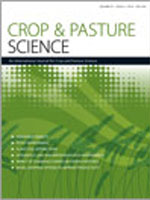The colour of Asian yellow alkaline noodles is an important indicator of quality and influences consumer choice. Apigenin di-C-glycosides (ACGs) and lutein present in wheat flour have been reported to contribute to the yellow colour; however, their relative roles have not been quantified. This study was conducted to quantify the contribution of ACGs to the part of the yellow colour that develops in the presence of alkaline salts and to assess the potential for improving colour.
Whereas lutein is present in all grain tissues, ACGs are concentrated in the embryo. Significant genetic variation was apparent for ACG content, but there was no significant correlation between grain content and the amount recovered in milled flour. The yellow colour caused by the reaction of flour constituents with alkali was estimated to be ∼5–6 b* units or ∼22–27% of total yellow colour. However, only 1–2 units (5–10% of total yellow colour) could be attributed to ACGs, suggesting that a significant portion of the yellow colour of alkaline noodles is due to other unidentified factors or compounds.





